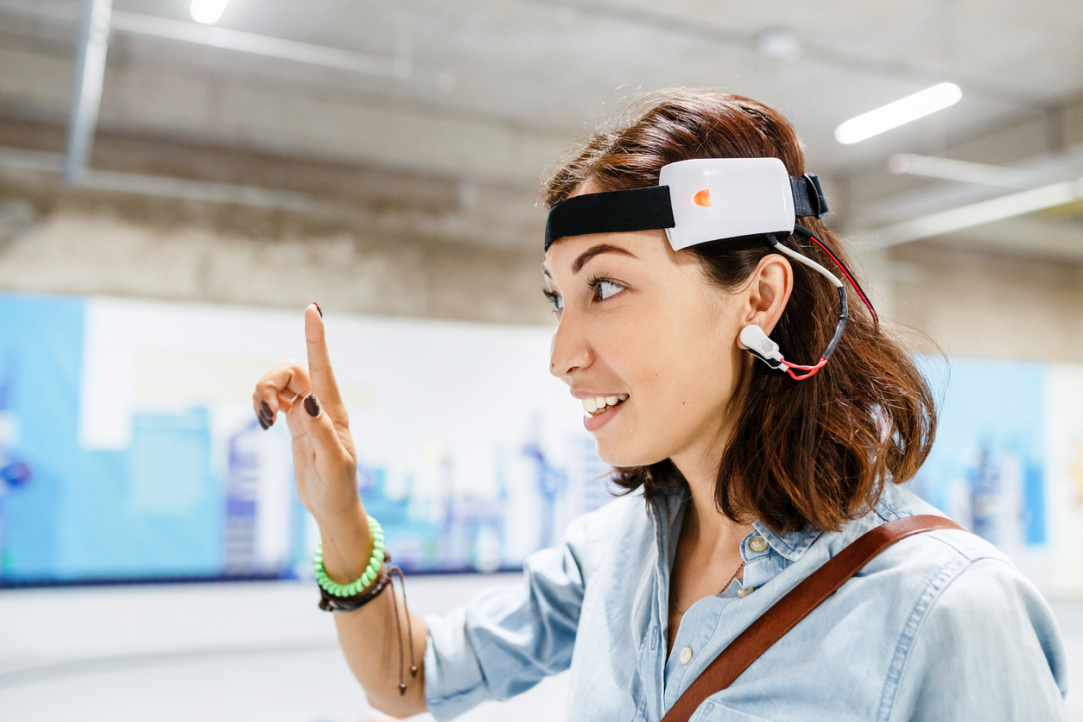Unconscious Perception of Sounds: We Hear Differences Even without Listening

Neurobiologists from HSE University and the RAS Institute of Higher Nervous Activity and Neurophysiology proved that the human brain unconsciously distinguishes between even very similar sound signals during passive listening. The study was published in Neuropsychologia.
Our auditory system is able to detect sounds at an implicit level. The brain can distinguish between even very similar sounds, but we do not always recognise these differences. The researchers demonstrated this in their study dedicated to sound perception during passive listening (when the subject is not trying to explicitly hear the differences).
To investigate this, the researchers carried out an experiment with 20 healthy volunteers. The participants listened to sounds while the researchers used electroencephalography (EEG) to measure their brain responses to the stimuli. The sounds were so similar that the participants could only explicitly distinguish them with 40% accuracy.
First, the volunteers listened to sequences of three sounds in which one sound was repeated often, while the two others appeared rarely. The participants were asked to press a key if they heard a difference in the sounds. Then, in passive listening mode, the same sounds appeared in more elaborate sequences: groups of five similar sounds and groups in which the fifth sound was different.
Two types of sound sequences were used in the experiment: those with local irregularities and those with global irregularities. In the first type, groups of similar sounds were often repeated, while a group with a different sound at the end appeared randomly and rarely. In the second type, groups with a different sound at the end appeared often and groups of similar sounds appeared rarely.
Detecting these two types of sound sequences requires attention at different levels. The brain reacts differently to them, and EEG registers different types of potentials. Local irregularity can be detected without explicit attention and elicits mismatch negativity (MMN) and P3a potentials. Global irregularity demands concentration and elicits P3b potential, which reflects a higher level of consciousness. The same potentials were registered in earlier experiments with the same methodology. The difference with the current study by researchers from the HSE Institute for Cognitive Neuroscience and the RAS Institute of Higher Nervous Activity and Neurophysiology is that they used sounds that are barely distinguishable. In earlier studies, stimuli (sounds or images) could be recognized with 100% accuracy.

Olga Martynova, principal researcher, Senior Research Fellow at the Institute for Cognitive Neuroscience and Academic Supervisor of the programme in Cognitive Neurobiology
‘We made the sound sequence more complicated, assuming this would facilitate sound recognition. We would see this in an increased amplitude of potential. But the result was unexpected. Instead of P3b potential in global irregularities, we saw emerging N400 potential, which is related to explicit information processing but can also appear in implicit attention. The appearance of this potential is a sign of a hidden, implicit form of learning that is constantly happening in our lives.'
The appearance of N400 potential confirms an existing theory that explains how consciousness works. According to the theory of predictive coding, the brain creates a model of the environment based on its experience and uses predictions to optimize its operations. When faced with experiences that contradict these predictions, its world outlook is updated. This process forms the basis of implicit (unconscious) learning and is related to the aim of minimizing prediction errors to enable better adaptation and faster reaction to changes in the environment.
The results of the study are important for fundamental science (since they prove the predicting coding model) and have possible applications in clinical studies. For example, P3b and N400 potentials can be used to evaluate the consciousness level of patients who are unable to explicitly react to stimuli (such as in cases of Alzheimer’s disease, Parkinson’s disease, comas etc).
If you are interested in taking part in neurobiological studies, please contact the researchers via email at omartynova@hse.ru.
See also:
Scientists Uncover Why Consumers Are Reluctant to Pay for Sugar-Free Products
Researchers at the HSE Institute for Cognitive Neuroscience have investigated how 'sugar-free' labelling affects consumers’ willingness to pay for such products. It was found that the label has little impact on the products’ appeal due to a trade-off between sweetness and healthiness: on the one hand, the label can deter consumers by implying an inferior taste, while on the other, it signals potential health benefits. The study findings have been published in Frontiers in Nutrition.
Internal Clock: How Heart Rate and Emotions Shape Our Perception of Time
Our perception of time depends on heart rate—this is the conclusion reached by neuroscientists at HSE University. In their experiment, volunteers watched short videos designed to evoke specific emotions and estimated each video's duration, while researchers recorded their heart activity using ECG. The study found that the slower a participant's heart rate, the shorter they perceived the video to be—especially when watching unpleasant content. The study has been published in Frontiers in Psychology.
Scientists Develop New Method to Detect Motor Disorders Using 3D Objects
Researchers at HSE University have developed a new methodological approach to studying motor planning and execution. By using 3D-printed objects and an infrared tracking system, they demonstrated that the brain initiates the planning process even before movement begins. This approach may eventually aid in the assessment and treatment of patients with neurodegenerative diseases such as Parkinson’s. The paper has been published in Frontiers in Human Neuroscience.
HSE Scientists Test New Method to Investigate Mechanisms of New Word Acquisition
Researchers at the HSE Centre for Language and Brain were among the first to use transcranial alternating current stimulation to investigate whether it can influence the acquisition of new words. Although the authors of the experiment have not yet found a link between brain stimulation and word acquisition, they believe that adjusting the stimulation parameters may yield different results in the future. The study has been published in Language, Cognition and Neuroscience.
When Thoughts Become Movement: How Brain–Computer Interfaces Are Transforming Medicine and Daily Life
At the dawn of the 21st century, humans are increasingly becoming not just observers, but active participants in the technological revolution. Among the breakthroughs with the potential to change the lives of millions, brain–computer interfaces (BCIs)—systems that connect the brain to external devices—hold a special place. These technologies were the focal point of the spring International School ‘A New Generation of Neurointerfaces,’ which took place at HSE University.
How the Brain Responds to Prices: Scientists Discover Neural Marker for Price Perception
Russian scientists have discovered how the brain makes purchasing decisions. Using electroencephalography (EEG) and magnetoencephalography (MEG), researchers found that the brain responds almost instantly when a product's price deviates from expectations. This response engages brain regions involved in evaluating rewards and learning from past decisions. Thus, perceiving a product's value is not merely a conscious choice but also a function of automatic cognitive mechanisms. The results have been published in Frontiers in Human Neuroscience.
Electrical Brain Stimulation Helps Memorise New Words
A team of researchers at HSE University, in collaboration with scientists from Russian and foreign universities, has investigated the impact of electrical brain stimulation on learning new words. The experiment shows that direct current stimulation of language centres—Broca's and Wernicke's areas—can improve and speed up the memorisation of new words. The findings have been published in Neurobiology of Learning and Memory.
Scientists Examine Neurobiology of Pragmatic Reasoning
An international team including scientists from HSE University has investigated the brain's ability to comprehend hidden meanings in spoken messages. Using fMRI, the researchers found that unambiguous meanings activate brain regions involved in decision-making, whereas processing complex and ambiguous utterances engages regions responsible for analysing context and the speaker's intentions. The more complex the task, the greater the interaction between these regions, enabling the brain to decipher the meaning. The study has been published in NeuroImage.
HSE Researchers Discover Simple and Reliable Way to Understand How People Perceive Taste
A team of scientists from the HSE Centre for Cognition & Decision Making has studied how food flavours affect brain activity, facial muscles, and emotions. Using near-infrared spectroscopy (fNIRS), they demonstrated that pleasant food activates brain areas associated with positive emotions, while neutral food stimulates regions linked to negative emotions and avoidance. This approach offers a simpler way to predict the market success of products and study eating disorders. The study was published in the journal Food Quality and Preference.
HSE Neurolinguists Create Russian Adaptation of Classic Verbal Memory Test
Researchers at the HSE Centre for Language and Brain and Psychiatric Hospital No. 1 Named after N.A. Alexeev have developed a Russian-language adaptation of the Rey Auditory Verbal Learning Test. This classic neuropsychological test evaluates various aspects of auditory verbal memory in adults and is widely used in both clinical diagnostics and research. The study findings have been published in The Clinical Neuropsychologist.


